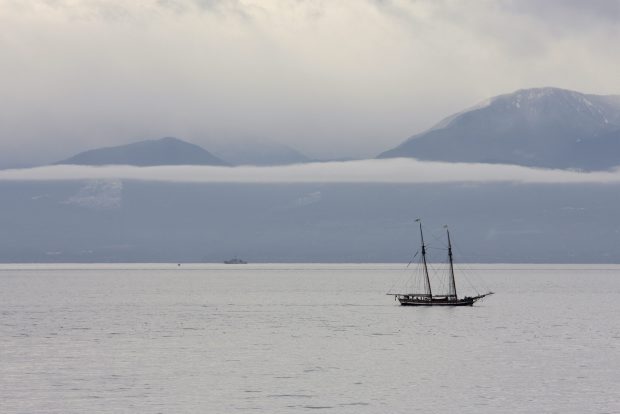VICTORIA – The rich environment of the Southern Strait of Georgia is slated to become a national marine conservation area, giving extra protection to the water and marine life, but allowing most recreational and commercial activities to continue.

Federal Environment Minister Peter Kent, speaking Thursday at Shaw Ocean Discovery Centre, said that, after years of discussion, boundaries have been set and will be finalized after consultation with First Nations and local governments.
The plan, which eventually will take in 1,400 square kilometres of the Salish Sea, could be finalized within a year.
The protected area will stretch from Cordova Bay to southern Gabriola Island, including Saanich Inlet. However, protection will be phased in, starting with 800 square kilometres around the southern Gulf Islands.
The marine reserve will surround Gulf Islands National Park Reserve. The only other protected area of this kind is the ocean around Gwaii Haanas National Marine Conservation Area Reserve and Haida Heritage Site.
A marine protected area will not stop recreation, ecologically sustainable fishing, commercial shipping or other activities already taking place. But activities must not endanger the water, species or ecosystem, Kent said.
“What we have learned along the way is that protecting a body of water doesn’t mean guarding it from Canadians. Our goal is to harmonize conservation practices with other activities, such as fishing or shipping and, of course recreation,” he said.
The only activities specifically prohibited in marine conservation areas are mining, oil and gas exploration and “exploitation.”
Richard Carson, Parks Canada’s national marine conservation area director, said standards will be set higher once the area is protected.
“We will be addressing some of the sources of pollution and some of the habitat concerns that have been impacting the area, such as eelgrass, and that will help increase fish populations,” Carson said.
A key consideration will be the level of fishing allowed and, while environmental groups are applauding the step toward protection, they are calling for “no take” core areas and buffer zones.
“We need to have protected areas that really mean something. We want to make sure it is really protected,” said Sabine Jessen of the Canadian Parks and Wilderness Society, who is also a member of the Southern Strait of Georgia National Marine Conservation Area Coalition.
“We need to have core areas where there are very few activities and, particularly where there is no fishing,” she said.
“We are still looking at where those should be.”
The coalition is also calling for special management zones, such as whale sanctuaries, research-only areas and eelgrass protection sites.
The Southern Strait of Georgia is part of the critical habitat of endangered southern resident killer whales.
Activities harmful to marine ecosystems “including bottom trawling, large-scale dredging, dumping, salmon aquaculture and non-renewable resource development,” should also be banned, according to the Coalition.
Rich marine life proliferates in the Southern Strait of Georgia, with species ranging from the giant Pacific octopus, wolf eels and salmon to kelp forests and seabirds, because fresh water from the Fraser River mixes with ocean water flooding through the Juan de Fuca and Haro straits. The diversity is why it was chosen as one of 29 marine regions that Parks Canada wants represented in a network of marine conservation areas.
Talks about a marine protected area started 15 years ago between the federal and provincial governments, but one of the major hitches was that the Georgia Strait is one of the few areas where the seabed is provincially owned. The province has agreed to hand over the seabed.
Provincial Environment Minister Terry Lake said the designation “will provide for permanent and rigorous environmental protection.”




Comments